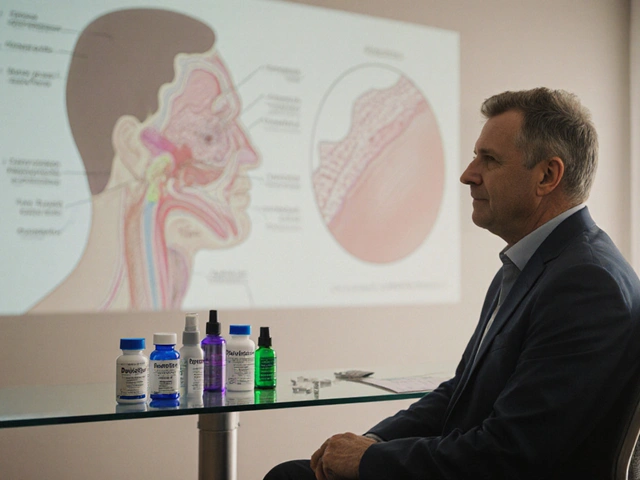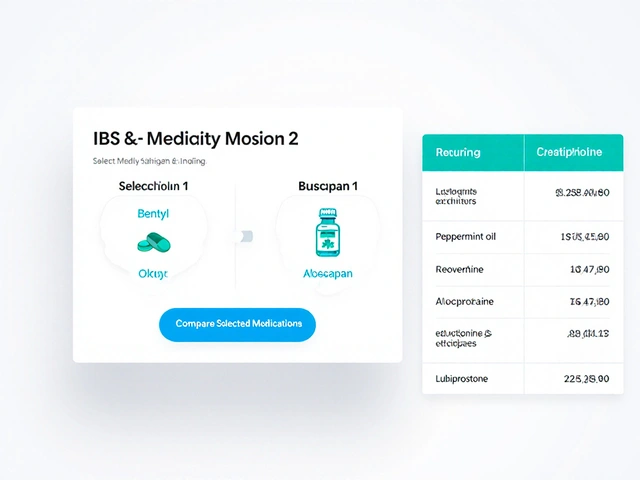Prilosec (omeprazole): What It Does and How to Use It Safely
Prilosec is a popular proton pump inhibitor (PPI) used to reduce stomach acid. People take it for heartburn, GERD, stomach ulcers, and to prevent acid damage from NSAIDs. The active ingredient is omeprazole, and you’ll find it both as a prescription and over-the-counter.
How it works is simple: Prilosec blocks the acid pumps in your stomach lining, so less acid is made. That helps heal irritation and reduces symptoms like burning, regurgitation, and chest discomfort. It doesn’t work instantly — expect relief in a few days, with full benefit after 1–4 weeks for some conditions.
Dosage and how to take it
For OTC heartburn, the usual dose is 20 mg once daily. Prescription doses can be higher depending on the problem. Take Prilosec 30–60 minutes before your main meal in the morning. Swallow capsules whole; don’t chew or crush delayed-release forms. If you miss a dose, take it when you remember, but don’t double up that day.
Side effects, risks, and interactions
Most people tolerate Prilosec well. Common side effects are headache, nausea, stomach pain, and diarrhea. Long-term or high-dose use can raise the risk of low magnesium, vitamin B12 deficiency, bone fractures, and certain gut infections. Tell your doctor if you’re on blood thinners, clopidogrel, or antifungals — omeprazole can interact with several medicines.
If you notice severe diarrhea, sudden belly pain, easy bruising, or signs of low magnesium like muscle cramps or fast heartbeat, contact your provider. Stop the drug only when advised — sudden stopping can cause acid rebound and worse symptoms.
Prilosec isn’t the only option. H2 blockers like famotidine work for mild cases and act faster, while antacids give quick short relief. For severe reflux, doctors may try higher-dose PPIs, lifestyle changes, or testing for complications.
Simple habits make a big difference: lose a little weight if needed, avoid late-night meals, raise the head of your bed, skip smoking, and limit trigger foods like spicy meals, caffeine, and alcohol. These steps often reduce how much medication you need.
Planning for short-term vs long-term use matters. For occasional heartburn, a short OTC course may be enough. For chronic GERD, your doctor will weigh benefits and risks of ongoing PPI therapy and check for side effects with periodic tests.
Want to change therapy or stop Prilosec? Talk with your clinician first. They can suggest tapering, switching to an H2 blocker, or testing for underlying causes like H. pylori. Safe use means pairing medicine with common-sense lifestyle fixes.
Cost and availability: generic omeprazole is cheap and widely available. Many pharmacies sell 20 mg OTC packs, and insurance often covers prescription versions. If cost is an issue, ask your pharmacist about generics or coupon programs.
Kids and pregnancy: don’t give Prilosec to children or pregnant people without medical advice. Dosing differs, and some stages require alternatives. Always check with pediatricians or obstetricians before starting any acid-reducing medicine.
Questions? Bring your list of symptoms, meds, and allergies to your next visit — that helps the doctor choose the right plan.

Dig into everything you never thought you needed to know about Prilosec (omeprazole). This article takes you beyond the quick fix and explains how the drug works, the real talk on side effects, surprising tips, and how you can get the best results safely. If you, your family, or your friends are reaching for acid reducers, this read will prep you with answers and insights that matter long term.
Continue Reading





